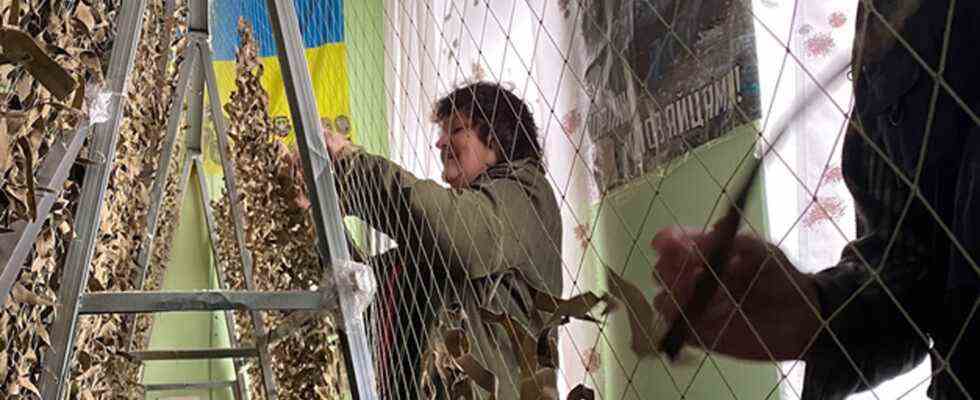report
Status: 08.02.2022 09:12 a.m
Today, Foreign Minister Baerbock is visiting the Ukrainian-Russian border area. Russia has more than 100,000 soldiers stationed on its side. How do people live with the threat?
“At the moment we don’t see any signs that the residents are worried about an alleged robbery,” says Ksenia Sukhova, secretary of the Mariupol city council.
In fact, there is no sign of unrest or even panic in the port city on the Azov Sea, far in the south-east of Ukraine. And this despite the fact that it has repeatedly been read that Mariupol could be the first place to be attacked in the event of a potential Russian invasion because of its location – between the areas occupied by pro-Russian separatists and the Crimean peninsula annexed by Russia.
“This threat has been with us since 2014,” says officer Suchowa. “We live very close to the line of confrontation. But we don’t hear any shots, no explosions.” That calms people down. “There are a lot of military in the city, the concentration of military units is very high both at sea and on land. And that gives us a sense of security.”
Russian troop movements along the Ukrainian border have not changed that. The people of Mariupol, says Sukhova, have gotten used to living with the war and understand that the situation is under control.
Camouflage net production in the Donbas
Around 230 kilometers further west, in the city of Zaporizhia, the geographical distance to the war in the Donbas is greater – but not the emotional one. In an unheated room of a very outdated community center, four volunteers from the 50+ generation work on a camouflage net – while singing Ukrainian national songs together.
“You know what condition our army was in in 2014,” says Schanetta Maljarova, who launched the citizens’ initiative at the time. “We sent clothes, sweets to the front lines…everything we could. And we understood that we also have to hide our boys. How could we do that? With nets.”
A handmade camouflage net measures six by eight meters – large enough for military vehicles. The woven strips of fabric are donations from a textile factory, leftovers from the production of soldiers’ uniforms.
Gratitude for German support
She is observing the current developments along the Russian-Ukrainian border with concern, says Maljarowa, but it is also important for her to keep a cool head. The knowledge of the now intensified diplomatic efforts helps her.
“This is extremely important to us. We honor and respect everyone who comes to us. It is with great gratitude that we receive military aid – and we understand that Europe is behind us.”
Germany is also helping Ukraine a lot, adds the pensioner. “Maybe not in the way we would like… But we are very grateful for the support.”
Baerbock travels to the confrontation line
Once again, the Ukrainian government’s demands for German arms supplies have come to nothing. But the fact that the Federal Republic of Germany has been providing Ukraine with humanitarian support since 2014 is noticed and appreciated by the local people, says Ksenia Sukhova on the Mariupol city council.
“And for them to come and deal with our situation means we’re not going to be let down with our problems or potential threats.”
Yesterday, Foreign Minister Annalena Baerbock visited a military hospital in Kiev co-financed by Germany and thus also focused on humanitarian aid. Today she will travel to Mariupol and the confrontation line.
Eastern Ukraine: What will the diplomatic visitor marathon bring?
Martha Wilczynski, ARD Moscow, February 8, 2022 7:58 a.m

